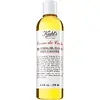What's inside
What's inside
 Key Ingredients
Key Ingredients

 Benefits
Benefits

 Concerns
Concerns

 Ingredients Side-by-side
Ingredients Side-by-side

Salicylic Acid
MaskingDipotassium Glycyrrhizate
HumectantWater
Skin ConditioningMyristic Acid
CleansingAlcohol Denat.
AntimicrobialPalmitic Acid
EmollientPotassium Hydroxide
BufferingGlycol Stearate
EmollientGlycerin
HumectantScutellaria Lateriflora Extract
Skin ConditioningMelaleuca Alternifolia Leaf Extract
PerfumingSodium Hyaluronate
HumectantSoluble Collagen
HumectantCentella Asiatica Extract
CleansingButylene Glycol
HumectantTrisodium EDTA
Disodium EDTA
Di-T-Butylhydroquinone
AntioxidantHydroxypropyl Methylcellulose
Emulsion StabilisingPotassium Cocoyl Rice Amino Acids
EmollientDiallyldimethyl Ammonium Chloride
PEG-7 Glyceryl Cocoate
EmulsifyingPotassium Alum
AstringentPhenoxyethanol
PreservativeSodium Benzoate
MaskingParfum
MaskingSalicylic Acid, Dipotassium Glycyrrhizate, Water, Myristic Acid, Alcohol Denat., Palmitic Acid, Potassium Hydroxide, Glycol Stearate, Glycerin, Scutellaria Lateriflora Extract, Melaleuca Alternifolia Leaf Extract, Sodium Hyaluronate, Soluble Collagen, Centella Asiatica Extract, Butylene Glycol, Trisodium EDTA, Disodium EDTA, Di-T-Butylhydroquinone, Hydroxypropyl Methylcellulose, Potassium Cocoyl Rice Amino Acids, Diallyldimethyl Ammonium Chloride, PEG-7 Glyceryl Cocoate, Potassium Alum, Phenoxyethanol, Sodium Benzoate, Parfum
Zea Mays Germ Oil
EmollientRicinus Communis Seed Oil
MaskingDiethylhexyl Sodium Sulfosuccinate
CleansingCocamide Mipa
EmulsifyingParfum
MaskingPropylene Glycol
HumectantPersea Gratissima Oil
Skin ConditioningVitis Vinifera Seed Oil
EmollientCocos Nucifera Oil
MaskingOryza Sativa Bran Oil
EmollientCoumarin
PerfumingTocopherol
AntioxidantBenzyl Alcohol
PerfumingHelianthus Annuus Seed Oil
EmollientRosmarinus Officinalis Extract
AntimicrobialZea Mays Germ Oil, Ricinus Communis Seed Oil, Diethylhexyl Sodium Sulfosuccinate, Cocamide Mipa, Parfum, Propylene Glycol, Persea Gratissima Oil, Vitis Vinifera Seed Oil, Cocos Nucifera Oil, Oryza Sativa Bran Oil, Coumarin, Tocopherol, Benzyl Alcohol, Helianthus Annuus Seed Oil, Rosmarinus Officinalis Extract
Ingredients Explained
These ingredients are found in both products.
Ingredients higher up in an ingredient list are typically present in a larger amount.
Parfum is a catch-all term for an ingredient or more that is used to give a scent to products.
Also called "fragrance", this ingredient can be a blend of hundreds of chemicals or plant oils. This means every product with "fragrance" or "parfum" in the ingredients list is a different mixture.
For instance, Habanolide is a proprietary trade name for a specific aroma chemical. When used as a fragrance ingredient in cosmetics, most aroma chemicals fall under the broad labeling category of “FRAGRANCE” or “PARFUM” according to EU and US regulations.
The term 'parfum' or 'fragrance' is not regulated in many countries. In many cases, it is up to the brand to define this term.
For instance, many brands choose to label themselves as "fragrance-free" because they are not using synthetic fragrances. However, their products may still contain ingredients such as essential oils that are considered a fragrance by INCI standards.
One example is Calendula flower extract. Calendula is an essential oil that still imparts a scent or 'fragrance'.
Depending on the blend, the ingredients in the mixture can cause allergies and sensitivities on the skin. Some ingredients that are known EU allergens include linalool and citronellol.
Parfum can also be used to mask or cover an unpleasant scent.
The bottom line is: not all fragrances/parfum/ingredients are created equally. If you are worried about fragrances, we recommend taking a closer look at an ingredient. And of course, we always recommend speaking with a professional.
Learn more about Parfum